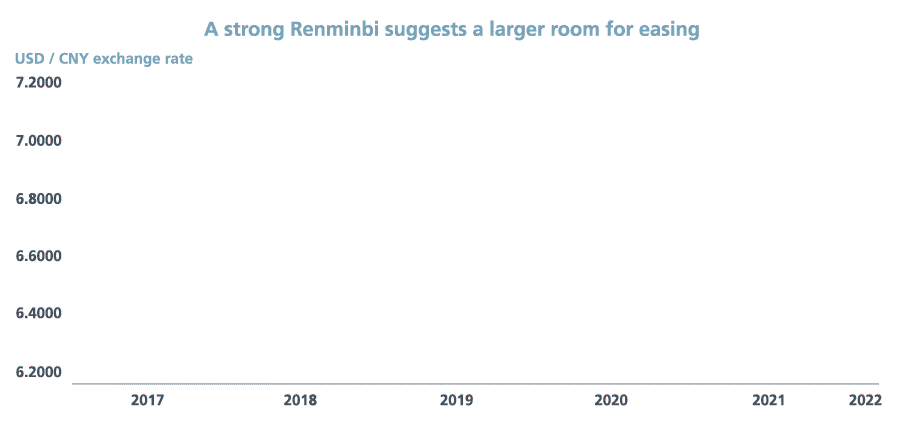The People’s Bank of China (PBoC) continues with its easing stance. After lowering the one-year benchmark lending rate in Dec 2021 for the first time in two years, the central bank has more recently cut the borrowing costs for medium-term policy loans, again a first such cut since April 2020. The 10-bps cut in this rate however was unexpected as Chinese regulators have been clamping down on corporate debt in recent years. Still the move came on the back of a slowing Chinese economy.
The December 2021 quarter growth was the slowest in a year and half at 4% compared to the 4.9% in the previous quarter. Although the full year growth came in at 8.1%, above the official 6% target, this was due to the rapid rebound from the COVID-19 low base. Signs of a slowdown have been evident since the second half of 2021, pressured by a recurrence of COVID-19 infections and a series of stringent government regulations imposed on the construction, property, internet, and education sectors. The increasing downward pressure on the economy as well as rising systemic risks in the property sector are key factors that prompted the recent policy easing.
In PBoC’s latest statement, the government explicitly hinted that it wanted to “walk in front of the market curve” and respond to the general concerns of the market in a timely manner. China’s equity market, which was one of Asia’s worst performing in 2021, rebounded but sentiment has remained lacklustre. While value sectors including financials and property-related names rebounded, some new economy sectors such as new energy, health care and consumer services retreated.
According to Eastspring China’s equity team, the muted response in the equity market mainly reflected concerns over fundamental uncertainties. While policy easing has become the market consensus, how much can it sustain or push up the economy, remains a question. The current policy easing will help the economy to stabilise in the next one or two quarters, with the recovery largely in an “L-shape” instead of a “V-shape”. One important note is RMB remains very strong against USD even as the rate gap between US and China increases. This implies a relatively larger room for China’s monetary easing.
We believe the confidence in the market will improve after the fundamental indicators stop sliding. Against a backdrop of accommodative liquidity conditions, we believe growth sectors will outperform. From a long-term perspective, it is also worth noting that China’s growth engines will consistently transition from the old-economy sectors to new-economy sectors. The old-fashioned credit-driven growth model will become increasingly ineffective. Inevitably, the new economy track will become the key focus for long-term funds.


